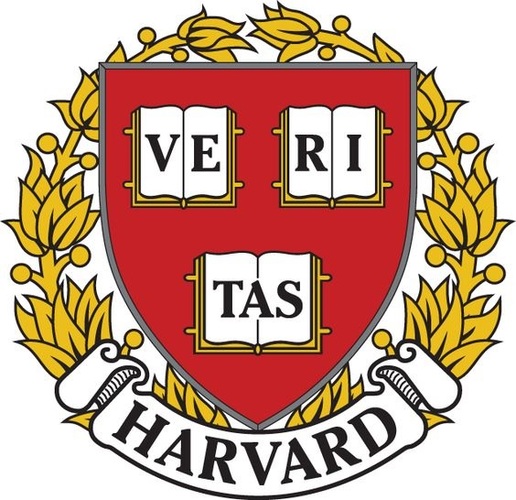
–>
December 12, 2022
The U.S. Supreme Court recently heard oral arguments pertaining to affirmative action in admissions at Harvard and UNC. Initially consolidated, the two cases were subsequently uncoupled for separate review, allowing Justice Ketanji Brown Jackson to review the UNC case, while recusing herself from the Harvard case, based on a conflict of interest. The fuller airing of challenges afforded by separate review may prove fortuitous, as one aspect of Harvard’s admissions criteria appears to be uniquely problematic.
‘); googletag.cmd.push(function () { googletag.display(‘div-gpt-ad-1609268089992-0’); }); }
Under the current theory of affirmative action in admissions, first introduced in Regents of the University of California v. Bakke (1978) and further clarified in Gratz v. Bollinger (2003) and Grutter v. Bollinger (2003), consideration of race as one of multiple forms of diversity is permissible in selecting an incoming class, because there is an educational benefit to engagement with diverse perspectives. Under this rationale, race serves as a proxy for racially informed viewpoints, which in turn may be considered only as one point of variation in perspective.
What is most troubling about Harvard’s admissions data is that it points toward possible discrimination against Asian applicants, based on traits of the sort used to justify consideration of race itself. In addition to traditional measures of academic aptitude and achievement, such as standardized test scores and high school grades, Harvard is said to use a “holistic” system of evaluation, which includes “personality” ratings that encompass such traits as “likability,” “helpfulness,” “integrity,” “courage,” “humor,” and “sensitivity.” Writing for the Atlantic, Alia Wong reported that “despite boasting higher test scores, better grades, and stronger extracurricular resumes than applicants of any other racial group, Asian American applicants consistently received lower rankings on those personality traits.”
This aspect of the controversy relates closely to my own research on higher education. A little over a decade ago, I served on the Teagle Foundation’s Working Group on Secularity and the Liberal Arts, together with colleagues from Bucknell, Williams, Vassar, and Macalester. In a related student focus group on our campus, there emerged an interesting finding, which formed the basis for an article that I published in About Campus. Participants in the discussion, which dealt mainly with spiritual development, spoke of a “culture of busyness” on campus, whereby it was deemed socially unacceptable for students to withdraw even briefly from engagement with the campus community for moments of quiet introspection. In conversation with other members of our working group, the prevalence of similar perceptions on their campuses was also affirmed.
‘); googletag.cmd.push(function () { googletag.display(‘div-gpt-ad-1609270365559-0’); }); }
In elaborating on this phenomenon, the participants in the focus group attributed it to the emphasis placed on campus involvement by institutional leaders. Their perception was well founded, insofar as student engagement theory is foundational to much of the literature in student affairs. This branch of theory is largely rooted in the works of Alexander Astin, Vincent Tinto, George Kuh, and others, and informs ongoing data collection and analysis at research centers on the campuses of Indiana, Elon, and UCLA, to name just a few. Student engagement theory also forms the basis for 11 “High-Impact Practices,” advanced by AAC&U, a professional association committed to undergraduate education in the liberal arts tradition.
In my aforementioned article, I expressed concern that prevailing notions of student engagement might tend to stigmatize introversion. Within the student affairs field, the existence of a selection bias in favor of extraversion would seem beyond dispute. At annual meetings of ACPA and NASPA, the two major professional associations in the field, the chatter in the hallways between sessions is deafening, and hugs are freely exchanged among reunited friends and colleagues throughout the conference sites.
In fairness, student affairs work involves significant human contact and typically requires an emotionally supportive disposition. In fact, the most common pattern of entry into the field is through leadership roles in student organizations or employment as resident assistants, orientation aides, admissions tour guides, and other similar positions. Without such experience, applicants to graduate programs in the field are typically at a significant disadvantage.
 Despite its ubiquity in the world of college admissions officers, extraversion is not a universal norm. Within the scope of normal human variation, the contrasting orientations toward extraversion and introversion mark the principal point of differentiation based on Jungian psychology. Together with contrasting tendencies toward sensing versus intuition, thinking versus feeling, and judging versus perceiving, this fundamental distinction forms the basis for the popular Myers-Briggs Type Indicator (MBTI).
Despite its ubiquity in the world of college admissions officers, extraversion is not a universal norm. Within the scope of normal human variation, the contrasting orientations toward extraversion and introversion mark the principal point of differentiation based on Jungian psychology. Together with contrasting tendencies toward sensing versus intuition, thinking versus feeling, and judging versus perceiving, this fundamental distinction forms the basis for the popular Myers-Briggs Type Indicator (MBTI).
Thus, in pursuit of diversity within the incoming class of a comprehensive university, an inordinate emphasis on extraversion as a qualification for admission would seem misguided on its face. From a multicultural perspective, specifically, a more inclusive mix of dispositions would clearly be favored, as extraversion tends to be more prevalent in Western cultures and introversion in Eastern cultures. This dichotomy has been widely attributed to the cultures’ respective emphases on individualism versus collectivism.
This pattern was evident in an interesting study of Japanese students’ homestay experiences, while enrolled in a short-term study abroad program at an American university. This study formed the basis for a master’s thesis that a faculty colleague and I co-directed several years ago, as well as a subsequent article that we published with our graduate student in the Journal of Student Affairs Research and Practice. From the perspectives of the students and host families in the study, the most favorable cultural attributes that they saw in each other were the American hosts’ warmth and openness of expression and the Japanese students’ polite manners. However, over time, both of these attributes became sources of tension, as the students favored greater privacy and the host families, greater candor. This tension exemplifies the concept of cognitive dissonance, which is instrumental to student development in college and is foundational to the educational purpose theory of affirmative action in admissions.
‘); googletag.cmd.push(function () { googletag.display(‘div-gpt-ad-1609268078422-0’); }); } if (publir_show_ads) { document.write(“
In addition to the direct link between Asian culture and tendencies toward introversion, patterns of affinity toward academic disciplines would likely increase the prevalence of such tendencies among more typical Asian applicants for college admission. Whereas MBTI profiles corresponding to academic majors in science, technology, engineering, and math (STEM) tend to favor introversion (I) over extraversion (E), the disproportionately high representation of Asian students within these fields would predictably reduce admission of such students under a system in which more introverted students across the applicant pool are consistently screened out.
To place this issue in further context, a distinction must be drawn between temperament and personality. Whereas temperament refers to one’s innate predisposition toward certain patterns of behavior, emotion, and expression, personality is further shaped by life experience. Among the experiential factors affecting personality development are the cultural norms instilled during one’s formative years. Thus, while tendencies toward introversion or extraversion may be largely innate, their behavioral manifestations would potentially vary greatly across Eastern versus Western cultures.
Even bypassing the thorny question of a genetic link between race and temperamental tendencies toward introversion or extraversion, the documented link between cultural norms and corresponding adaptive tendencies in personality development would likely render Harvard’s ratings unlawfully discriminatory, should a systematic bias in favor of extraversion appear in the data. Any such bias within the scoring system would not only predictably result in higher ratings for white applicants than for Asian applicants, but would also tend to favor those Asian American applicants who have been most deeply immersed into white culture (e.g., infant adoptees of white parents) over those whose exposure has been more limited (e.g., native-born offspring of naturalized immigrant parents).
Such a pattern of selection would fly in the face of the educational purpose theory of affirmative action in admissions, a justification that would take on even greater importance upon proof of disparate impact. On this last point, even those who lament the displacement of racial justice as the operative rationale for consideration of race in admissions would likely find room for agreement.
Image: Harvard U.
<!– if(page_width_onload <= 479) { document.write("
“); googletag.cmd.push(function() { googletag.display(‘div-gpt-ad-1345489840937-4’); }); } –> If you experience technical problems, please write to [email protected]
FOLLOW US ON
<!–
–>
<!– _qoptions={ qacct:”p-9bKF-NgTuSFM6″ }; ![]() –> <!—-> <!– var addthis_share = { email_template: “new_template” } –>
–> <!—-> <!– var addthis_share = { email_template: “new_template” } –>





